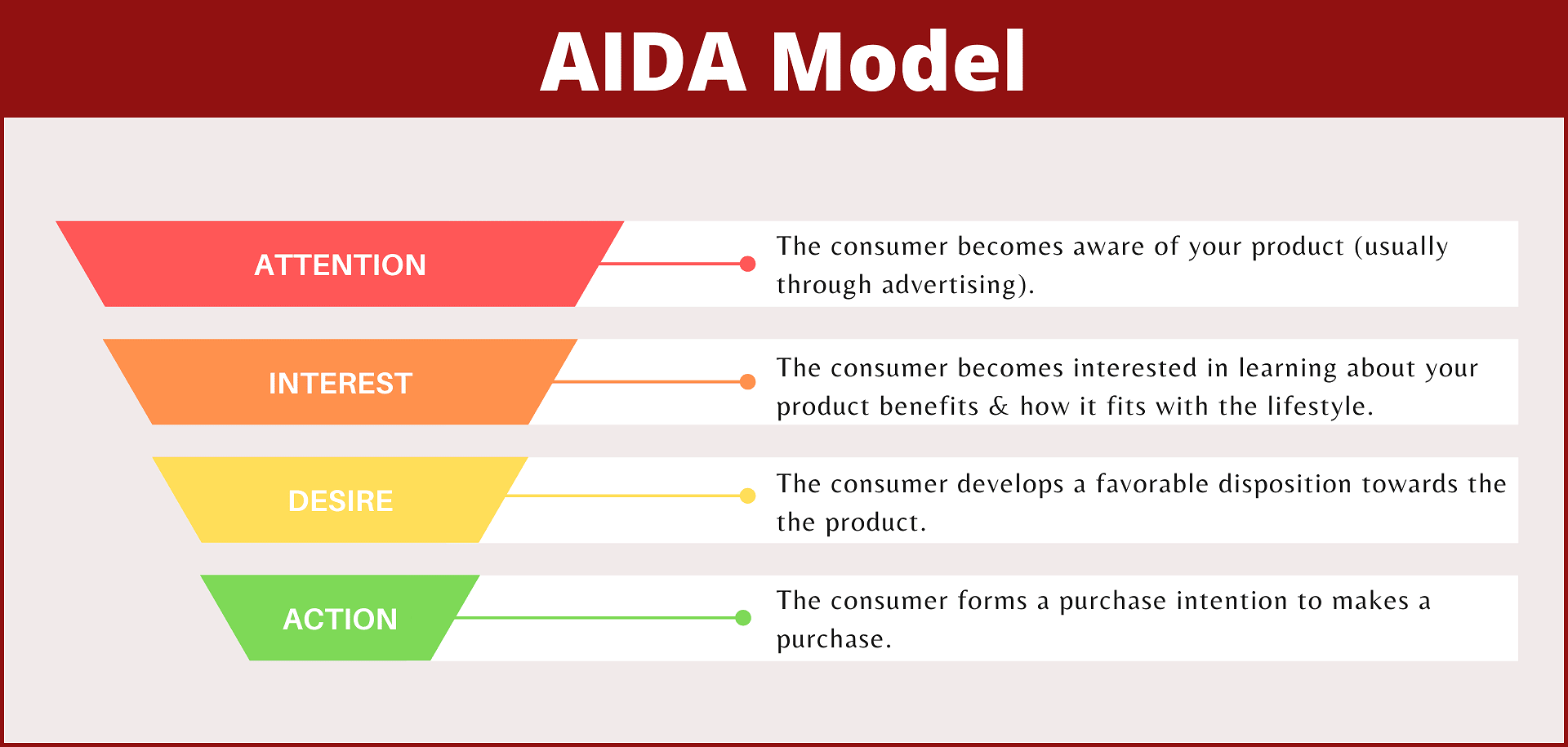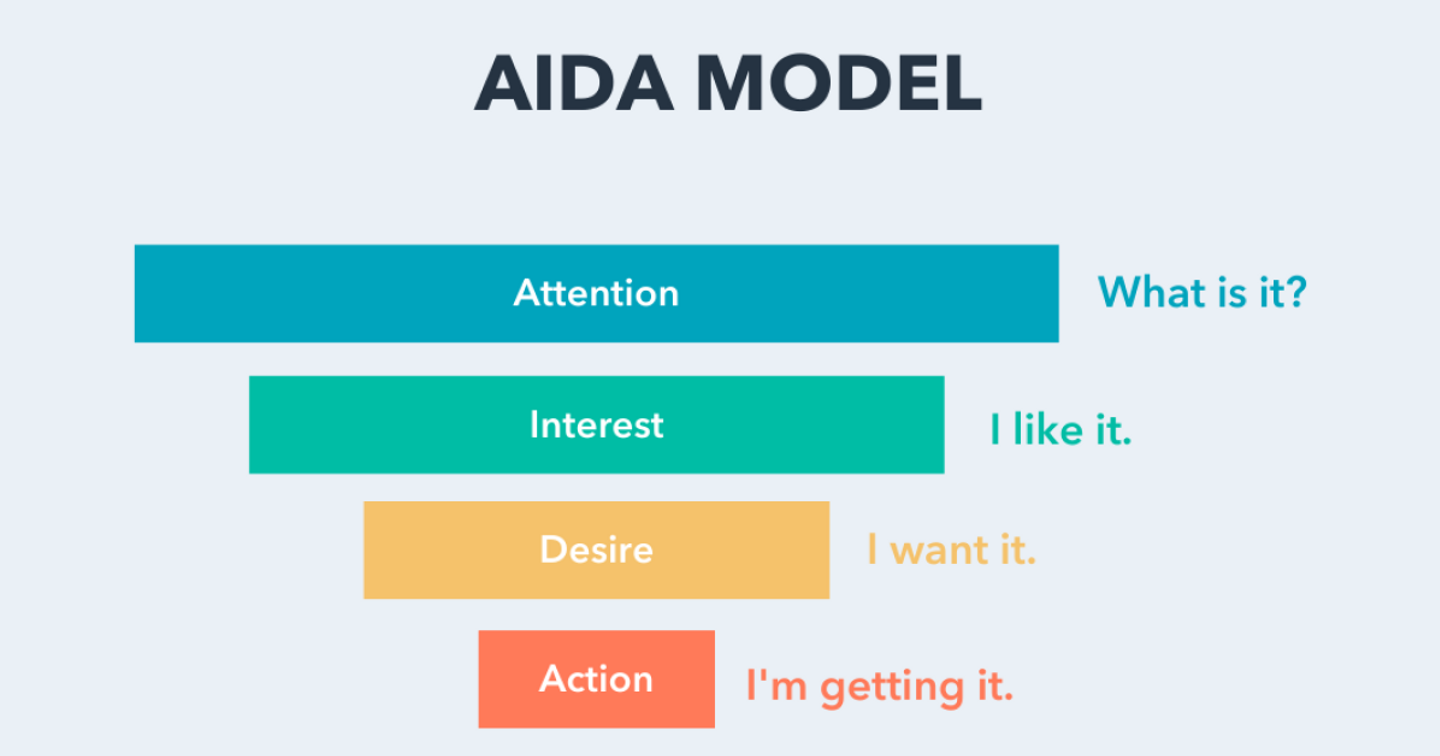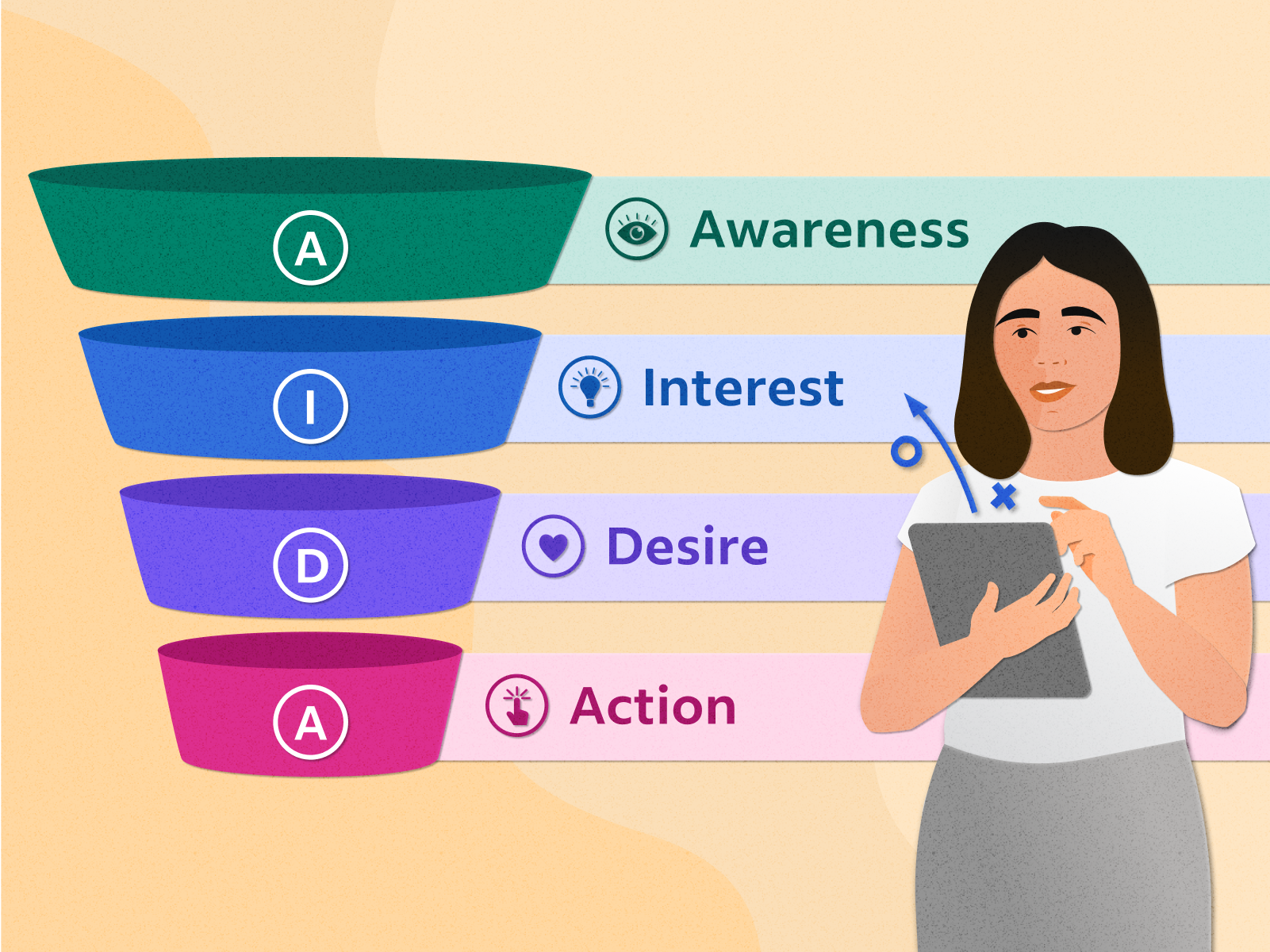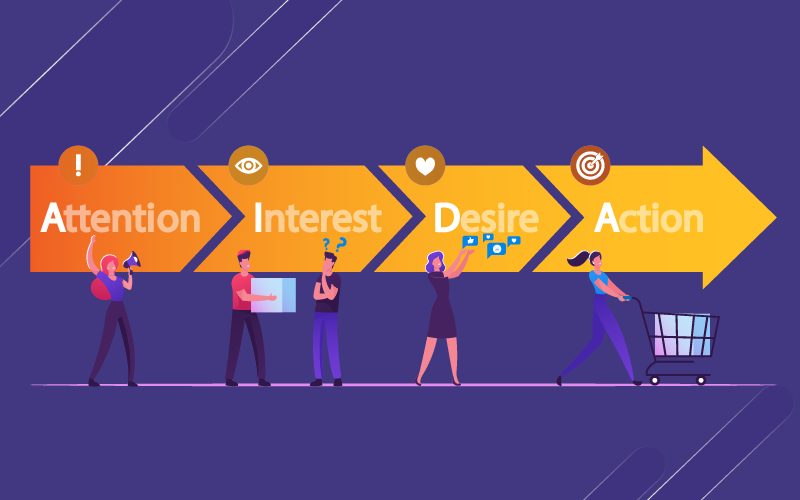Marketing is an essential aspect of any business, whether big or small. It is the process of promoting and selling products or services to potential customers, and it plays a crucial role in the success of a company. With the rise of technology and digital platforms, marketing techniques have evolved over time. However, despite these advancements, the basics of marketing remain the same.
One of the fundamental models in marketing that still holds its relevance today is the AIDA model. Developed in the late 19th century by American advertising pioneer Elias St. Elmo Lewis, the AIDA model has been used by marketers for over a century to understand and influence consumer behavior. In this article, we will delve deeper into the AIDA model, its importance, and how businesses can apply it to their marketing strategies.
Understanding the AIDA Model
The AIDA model is a simple yet effective marketing framework that outlines the four stages of a successful customer journey. It stands for Attention, Interest, Desire, and Action, representing the sequential steps that a consumer goes through before making a purchase decision. Let’s take a closer look at each stage:
- Attention: The first step in the AIDA model is to grab the audience’s attention. This stage focuses on creating awareness about a product or service and capturing the audience’s interest.
- Interest: Once you have captured their attention, the next step is to generate interest in your offering. This stage involves showcasing the benefits and solutions of your product or service and establishing an emotional connection with the audience.
- Desire: After generating curiosity and interest, the goal is to turn that interest into desire. This stage aims to convince the consumers that they need your product or service by highlighting its unique selling points and providing social proof.
- Action: The final step in the AIDA model is to encourage the consumers to take action. This stage focuses on converting the desire into a purchase by providing a clear call to action and simplifying the buying process.
In today’s fast-paced digital world, consumers are bombarded with numerous marketing messages every day. Therefore, it is crucial to understand and apply the AIDA model to cut through the clutter and effectively communicate with potential customers.

The AIDA model is a straightforward yet powerful marketing framework that outlines the four key stages of a successful customer journey
Attention: Capturing the Audience’s Interest
The first step in the AIDA model is to grab the audience’s attention. With the continuous bombardment of advertisements and information, it has become challenging to capture and retain people’s attention. However, with the right techniques, businesses can still make an impact and stand out from the competition. Here are some strategies to help you capture the audience’s interest:
Creating a Strong Headline
The headline is the first thing that people see when they come across an advertisement or marketing message. Therefore, it is crucial to make it compelling and attention-grabbing. According to a study by the American Press Institute, only two out of ten people read past the headline. This shows the importance of creating a strong headline that will make people want to continue reading or watching your content.
A good headline should be concise, clear, and relevant to the target audience. It should also pique their curiosity and make them want to know more. Some effective techniques for crafting a strong headline include:
- Using numbers and statistics: People are drawn to numbers and statistics as they provide concrete evidence and make the content more credible. For example, “5 Ways to Double Your Sales in 30 Days.”
- Asking a question: Questions naturally spark curiosity and encourage the audience to keep reading. However, make sure that your question is relevant to your offering and will resonate with your target audience. For example, “Are You Tired of Wasting Time on Inefficient Processes?”
- Creating a sense of urgency: Using words like “Limited Time,” “Last Chance,” or “Hurry” can create a sense of urgency and make people take immediate action. For example, “Last Day to Avail Our Discount Offer!”
Utilizing Visuals and Storytelling
In today’s digital age, visual content has become increasingly important in capturing and retaining people’s attention. According to a study by HubSpot, tweets with images receive 150% more retweets than those without images. Therefore, businesses need to incorporate visuals into their marketing efforts to make a lasting impact on their target audience.
Visuals not only grab attention but also aid in storytelling. Storytelling is a powerful tool that helps connect with the audience on an emotional level. According to a study by Princeton University, stories activate multiple areas in the brain, making it easier for people to remember and relate to the information. By incorporating visuals into your storytelling, you can make your message more powerful and engaging.
Interest: Generating Curiosity and Desire
Once you have captured the audience’s attention, the next step is to generate interest in your offering. This stage is crucial as it helps build a connection with the audience and makes them want to know more about your product or service. Here are some techniques for generating curiosity and desire:

After attracting the audience’s attention, the subsequent goal is to pique their interest in your offering
Highlighting Benefits and Solutions
In today’s fast-paced world, people are always looking for solutions that can make their lives easier and better. Therefore, highlighting the benefits and solutions of your product or service is crucial in generating interest among potential customers. However, simply listing down the features of your offering may not be enough. You need to explain how these features will benefit the consumers and solve their problems.
One effective way to do this is by using the “FAB” technique, which stands for Features, Advantages, and Benefits. Start by listing down the features of your product or service, then explain the advantages of these features, and finally, highlight the benefits that the consumers will receive. By doing this, you can clearly communicate the value of your offering and generate curiosity and desire among potential customers.
Establishing Emotional Connection
Emotions play a significant role in consumer behavior. According to a study by Harvard Business School, emotional campaigns are twice as likely to be shared than rational campaigns. Therefore, establishing an emotional connection with the audience is crucial in generating interest and desire for your product or service.
There are several ways to evoke emotions in your marketing efforts, such as:
- Telling a story: As mentioned earlier, storytelling is a powerful tool in marketing. By telling a relatable and emotional story, you can humanize your brand and connect with your audience.
- Using humor: Humor is another effective way to establish an emotional connection with the audience. A well-crafted humorous advertisement or social media post can make people remember your brand and generate positive associations.
- Leveraging nostalgia: Nostalgia is a powerful emotion that can evoke strong feelings and memories. By using elements of the past in your marketing, you can tap into this emotion and create a bond with your target audience.
Providing Social Proof
In today’s digital world, people rely heavily on social proof, such as reviews, ratings, and testimonials, to make purchase decisions. Therefore, providing social proof is crucial in generating interest and desire for your offering. Some effective ways to provide social proof include:
- Customer reviews and ratings: Encourage satisfied customers to leave reviews and ratings on your website or social media platforms. These reviews can help build trust and credibility among potential customers.
- Testimonials: Testimonials from happy customers can also serve as social proof. You can use these testimonials in your marketing efforts, such as on your website or in your advertisements.
- Influencer endorsements: Collaborating with influencers who have a significant following and influence among your target audience can also be an effective way to provide social proof for your offering.
Desire: Convincing Consumers to Take Action
After generating curiosity and interest, the next step is to turn that interest into desire. This stage is crucial as it aims to convince consumers that they need your product or service. Here are some techniques to help you create a desire for your offering:

Once curiosity and interest are generated, the subsequent step is to transform that interest into desire
Call to Action (CTA)
The call to action or CTA is a crucial element in any marketing message. It is the instruction that tells the audience what to do next, whether it is to “Buy Now,” “Sign Up,” or “Learn More.” A clear, concise, and compelling CTA can effectively guide the audience towards taking action.
When creating a CTA, consider the following tips:
- Make it straightforward: The CTA should be easy to understand and follow. Avoid using complex language or jargon.
- Use action verbs: Action verbs such as “Buy,” “Sign Up,” or “Register” can create a sense of urgency and encourage people to take immediate action.
- Utilize FOMO: Fear of Missing Out (FOMO) is a powerful psychological trigger that can motivate people to take action. By using phrases like “Limited Time Offer” or “Only 5 Spots Left,” you can create a sense of urgency and prompt people to act fast.
Fear of Missing Out (FOMO)
As mentioned earlier, FOMO is a powerful psychological trigger that can be utilized to create desire for your offering. It taps into people’s fear of missing out on something valuable or beneficial. By creating a sense of scarcity or exclusivity, you can make people want your product or service even more. Some ways to leverage FOMO include:
- Limited-time offers: Offering discounts or special promotions for a limited period can create a sense of urgency and prompt people to make a purchase before it’s too late.
- Promoting exclusivity: People are naturally attracted to exclusive offerings. By providing early access or limited editions of your product or service, you can create a sense of exclusivity and generate desire among potential customers.
Action: Encouraging Consumers to Make a Purchase
The final step in the AIDA model is to encourage consumers to take action and make a purchase. This stage is crucial as it determines whether all the efforts put into capturing attention, generating interest, and creating desire will lead to an actual sale. Here are some techniques to help you convert desire into action:
Simplifying the Buying Process
In today’s fast-paced world, people expect convenience and ease when making a purchase. Therefore, it is crucial to simplify the buying process as much as possible. If the process is complicated or takes too long, potential customers may abandon their purchase. Some ways to simplify the buying process include:
- Streamlining the checkout process: Make sure that the checkout process is user-friendly and straightforward. Avoid asking for unnecessary information or creating too many steps.
- Offering multiple payment options: People have different preferences when it comes to making payments. By offering multiple payment options, such as credit/debit card, PayPal, or cash on delivery, you can cater to a wider audience.
Offering Incentives and Discounts
Incentives and discounts are effective in encouraging people to take action and make a purchase. By offering a special deal or discount, you can create a sense of value and make your offering more attractive to potential customers. Some ways to offer incentives and discounts include:
- First-purchase discounts: Offering a discount or incentive for first-time buyers can entice them to make a purchase and try out your product or service.
- Bulk discounts: If you sell products, offering bulk discounts can encourage people to buy more than one item, increasing the overall purchase value.
- Free trials or samples: For services, offering free trials or samples can give people a taste of what you offer and motivate them to become paying customers in the future.
Applying the AIDA Model: Examples and Case Studies
Now that we have understood the AIDA model and its four stages, let’s look at some real-life examples of how businesses have successfully applied this model in their marketing efforts.
Coca Cola’s “Share a Coke” Campaign
In 2011, Coca Cola launched its “Share a Coke” campaign in Australia, where they replaced their iconic logo with popular names on their bottles and cans. This campaign aimed to capture the audience’s attention and generate interest by creating personalized and shareable content. By using people’s names, Coca Cola successfully tapped into the emotional connection and desire for personalization, prompting people to buy their products and share them with others.
Apple’s iPhone Launch Strategy
When Apple launched the first iPhone in 2007, they followed a strategic marketing approach based on the AIDA model. The initial teaser campaign focused on capturing attention by creating hype and curiosity about the upcoming product. When the iPhone was finally revealed, Apple generated interest by showcasing its unique features and design. The desire was created by highlighting the benefits of owning an iPhone and how it would change people’s lives. Finally, the call to action was to wait in line and purchase the iPhone when it was released. This strategy led to thousands of people lining up outside Apple stores on the launch day, resulting in record-breaking sales.
Dove’s “Real Beauty” Campaign
Dove has been successfully using the AIDA model in its marketing efforts for years. Their “Real Beauty” campaign, which started in 2004, aimed to capture attention by challenging traditional standards of beauty and featuring real women in their ads. By showcasing the results of using their products, Dove generated curiosity and desire among potential customers. They also established an emotional connection by promoting self-acceptance and body positivity. The call to action was to try out Dove’s products and feel confident in one’s skin.
Conclusion: The Timeless Relevance of the AIDA Model
The AIDA model has stood the test of time and remains one of the most effective marketing frameworks to this day. It provides businesses with a simple yet powerful way to understand and influence consumer behavior. By following the four stages of the AIDA model – Attention, Interest, Desire, and Action – businesses can effectively communicate their message, generate interest and desire for their offering, and ultimately drive sales. By incorporating the strategies mentioned in this article, you can apply the AIDA model to your marketing efforts and achieve success in today’s competitive business landscape.
In conclusion, the AIDA model is not just a marketing technique, but a comprehensive guide to understanding and influencing consumer behavior. It has been used by businesses for over a century and will continue to be relevant in the future. By mastering the art of capturing attention, generating interest, creating desire, and encouraging action, businesses can effectively promote their products or services and achieve their marketing goals.
